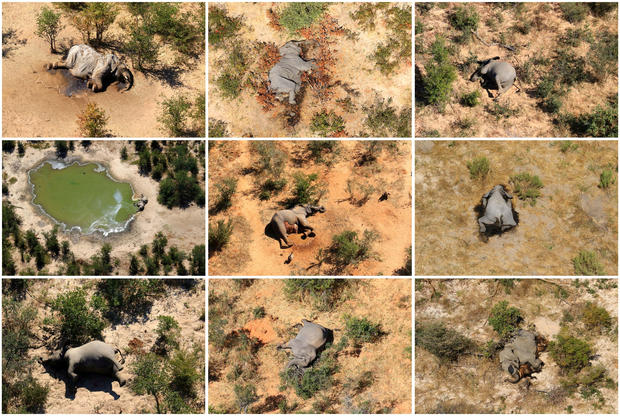
PHOTOGRAPHS OBTAINED BY REUTERS
Gaborone, Botswana Hundreds of elephants mysteriously died in Botswana’s famous Okavango Delta, the head of the wildlife department said Thursday, ruling out poaching while the tusks were intact. The landlocked country of southern Africa has the world’s largest elephant population, estimated at around 130,000.
“We have had a report of 356 elephants killed in the area north of the Okavango Delta and so far we have confirmed 275,” Cyril Taolo, acting director of the Department of Wildlife and National Parks, told AFP in a text message.
He said the cause of the deaths had not yet been established, as anthrax had been ruled out.
“We are not suspicious of poaching since (the) animals were found with tusks,” he said.
Samples were collected and sent to South Africa, Zimbabwe, and Canada for analysis.
PHOTOGRAPHS OBTAINED BY REUTERS
Similar deaths were first reported in May when authorities found 12 bodies in just one week in two villages in the northwest of the country.
The latest discoveries were reported by a wildlife conservation charity, Elephants Without Borders (EWB), whose confidential report regarding the 356 dead elephants was leaked to the media on Wednesday.
EWB suspects that elephants have been dying in the area for approximately three months.
According to the June 19, 2020 report, “70 percent of elephant carcasses were considered recent, died about a month ago, and 30 percent of the carcasses appeared fresh, one day to two weeks old.” .
“There was good evidence that elephants of all ages and sexes appear to be dying,” said the report written by EWB Director Mike Chase.
Several live elephants appeared to have been weak, lethargic, and emaciated, with some showing signs of disorientation, difficulty walking or limping, EWB said.
“An elephant was observed walking in circles, unable to change direction although other members of the herd encouraged it,” the report said.
.

